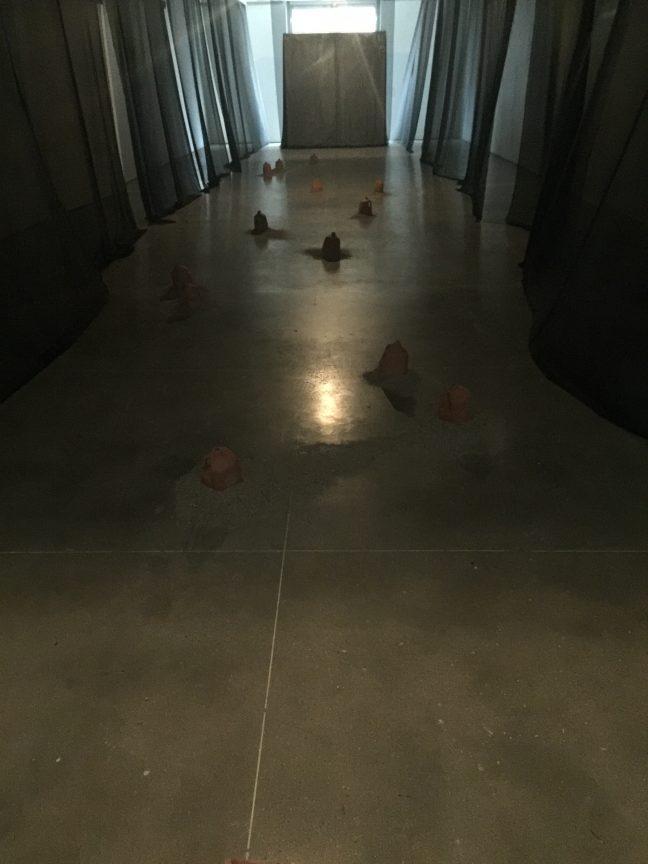Leigh Garcia’s masters of fine arts exhibition, “El Camino Doloroso,” was on display in the Humanities seventh floor gallery and wrapped up March 15, examining the treacherous journey undocumented Mexican immigrants endure while crossing the border to the United States.
Surrounded by sand, jugs displayed on the gallery floor represented this exhibit. Each jug contained a different image hand-drawn by Garcia, representing historic moments that have led up to and culminated in the current immigration situation.
Garcia said her personal background, as well as a Chicano Studies course that she took at the University of Wisconsin — which presented history she had previously learned from an exclusively white male perspective growing up in Texas —motivated her to center her show around the topic of undocumented immigration from Mexico to the United States.
“I’m from Texas and I’m biracial, so my grandparents actually crossed over the border illegally, or undocumented or unauthorized back in the 1940s,” Garcia said. “[Immigration has] always been part of my history that I didn’t know too much about, and then of course with our political climate, it became the forefront of my work.”
The installation has an eerie atmosphere. Sheer black curtains, which sway back and forth and have a faint scent of incense, enclose the 14 stations. Garcia said the ambiance is meant to allude to the feeling of being at a funeral, while the 14 water jug stations reference the 14 Stations of the Cross in Catholicism, which Garcia cites as a central component of Latinx culture. She hopes by participating in the exhibition, one can metaphorically trace parts of Chicano history and partake in their immigration journey as well.
Upon entering the space past the curtains, Garcia presents the viewers with the series of jugs laid in a smattering of sand, while audio of Chicano and Latinx individuals speak about their personal immigration experiences, interspersed with soft instrumental flute music.
“I’ve been thinking about these empty water jugs as a symbol for undocumented immigration, or more specifically, a symbol for contemporary undocumented immigration,” Garcia said. “Right now, our southern border states are covered in water jugs because undocumented immigrants carry them across the border with them, and then they end up dying of dehydration or exhaustion, and then they’ll leave the water jugs behind. I think [these trails] are a beautiful metaphor for immigration and connect like breadcrumbs for future immigrants to follow. For my installation, I wanted to mimic those trails.”
Part of the experience of this show invites viewers to crouch down close to the jugs on the ground, to see the drawings of various historical scenes close up. By looking down into the jugs while standing up, one can see small portions of the images, which are illuminated by a glow underneath. But to fully see each scene, it’s necessary to come closer to the jugs and look through the opening.
Garcia intends for this relatively uncomfortable physical position to allow spectators to imagine the exhaustion and uncomfortable experience immigrants face while crossing the border and symbolize the lengths one might be willing to go to learn about Chicano history and immigration.
“I hope that viewers will reflect on our history and think of the larger picture, so when they think about immigrants crossing the border they don’t think of them as just coming over to steal jobs, but think of them as people that are forced into the experience because of the political relationship the United States has had with Mexico, specifically,” Garcia said.


